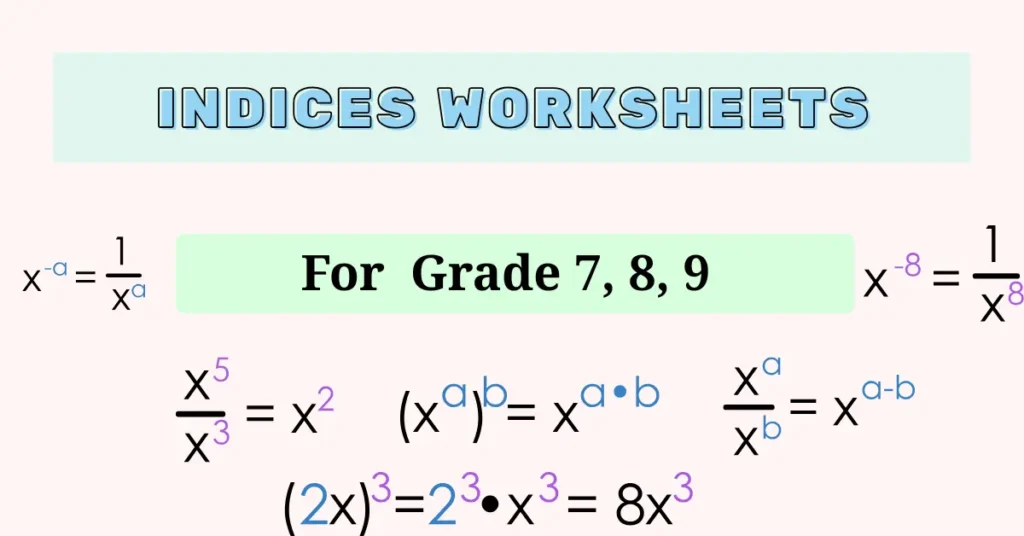
Indices worksheets comprise a variety of problems focusing on exponents, powers, and indices. These exercises are designed to help students understand the fundamental concepts of working with powers and exponents, enabling them to simplify complex expressions effectively. The questions typically involve operations such as multiplication, division, raising powers to powers, and applying the zero and negative exponent rules.
Learn more about Indices and their formulae from this wikipedia link.
Table of Contents
How to solve Indices Worksheets
To solve these problems, students often begin by expanding the expressions using the laws of indices. This includes applying the product rule (adding exponents when multiplying like bases), the quotient rule (subtracting exponents when dividing like bases), and the power rule (multiplying exponents when raising a power to another power). After expansion, the problems are further simplified using regular arithmetic operations like addition, subtraction, multiplication, and division.
A positive power or index, often referred to as an exponent, indicates the number of times a particular number, known as the base, should be multiplied by itself. For example, in the expression 3^4 (read as ‘three raised to the power of four’ or ‘three to the fourth power’), the base is 3, and the exponent is 4. This means you need to multiply 3 by itself four times: 3 × 3 × 3 × 3, which equals 81. Essentially, the exponent signifies repeated multiplication of the base number, making calculations involving large numbers more concise and manageable.
Importance of Indices Worksheets
These worksheets are valuable for reinforcing theoretical knowledge through practical application, providing ample practice in manipulating algebraic expressions involving indices, and enhancing problem-solving skills.
Download Indices Worksheets PDF
Indices, also known as exponents or powers, are an essential mathematical concept and feature in a variety of problem types. Here is a detailed explanation of the different types of problems related to indices:
Worksheets Type 1: Expressing Numbers as Powers of Integers:
In this type of problem, you’re required to rewrite a given number as a power of a specific integer, often bases like 2, 3, or 5. For example, expressing 8 as a power of 2, which is written as 2³.
These problems test your understanding of how numbers can be represented through repeated multiplication.
Worksheets Type 2: Arranging Numbers in Ascending or Descending Order:
These problems involve ordering numbers that are presented with indices. You may need to arrange them from the smallest to the largest (ascending) or from the largest to the smallest (descending).
To solve these, you often need to simplify or approximate the exponential values to compare them effectively.
Worksheets Type 3: Determining the Greater Number:
Here, you are asked to compare numbers with indices to identify which one is larger. For example, determining whether 3⁴ is greater than 4³.
This type of problem requires strong skills in comparing exponential expressions, sometimes using logarithms or estimation techniques.
Worksheets Type 4: Fill-in-the-Blank Problems:
These problems require you to complete an equation or expression by finding the missing exponent or base. For example, filling in the blank in 2□ = 16.
Solving these problems often involves reverse calculation, such as finding the logarithm or mentally determining the power needed.
Worksheets Type 5: Simplifying Exponential Expressions:
The final type of problem involves simplifying complex expressions with indices. This may include applying laws of exponents such as the product rule, quotient rule, and power rule.
For example, simplifying (2³)² to 2⁶ by applying the power of a power rule.
Understanding these different problem types will enhance your ability to tackle indices confidently across various mathematical scenarios.
Latest Posts
1 thought on “Indices worksheets for grade 7, 8 and 9 pdf”